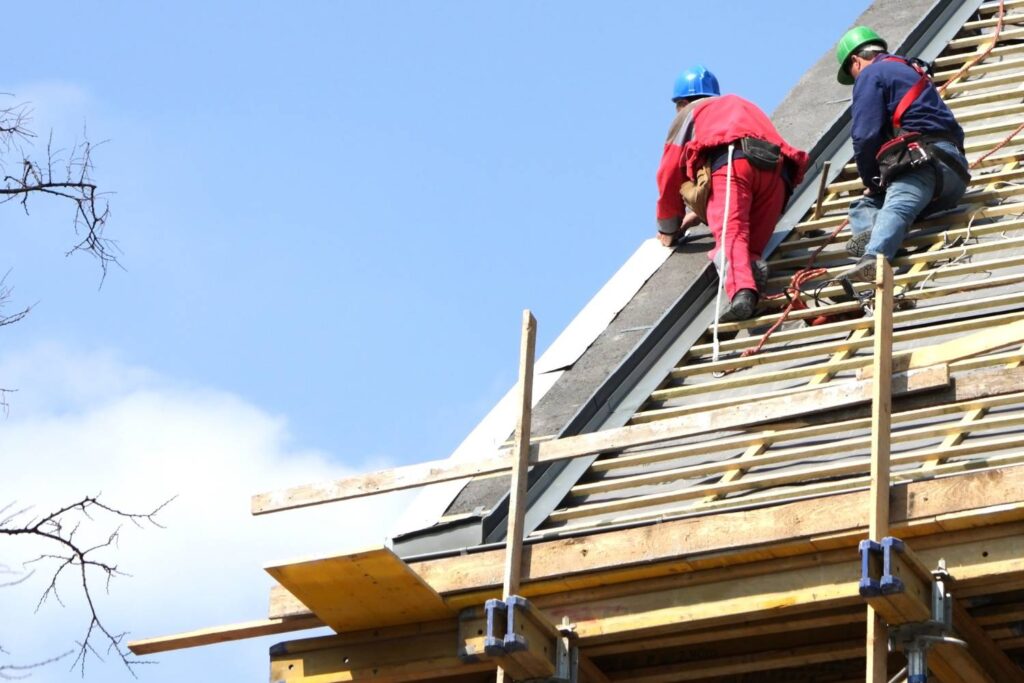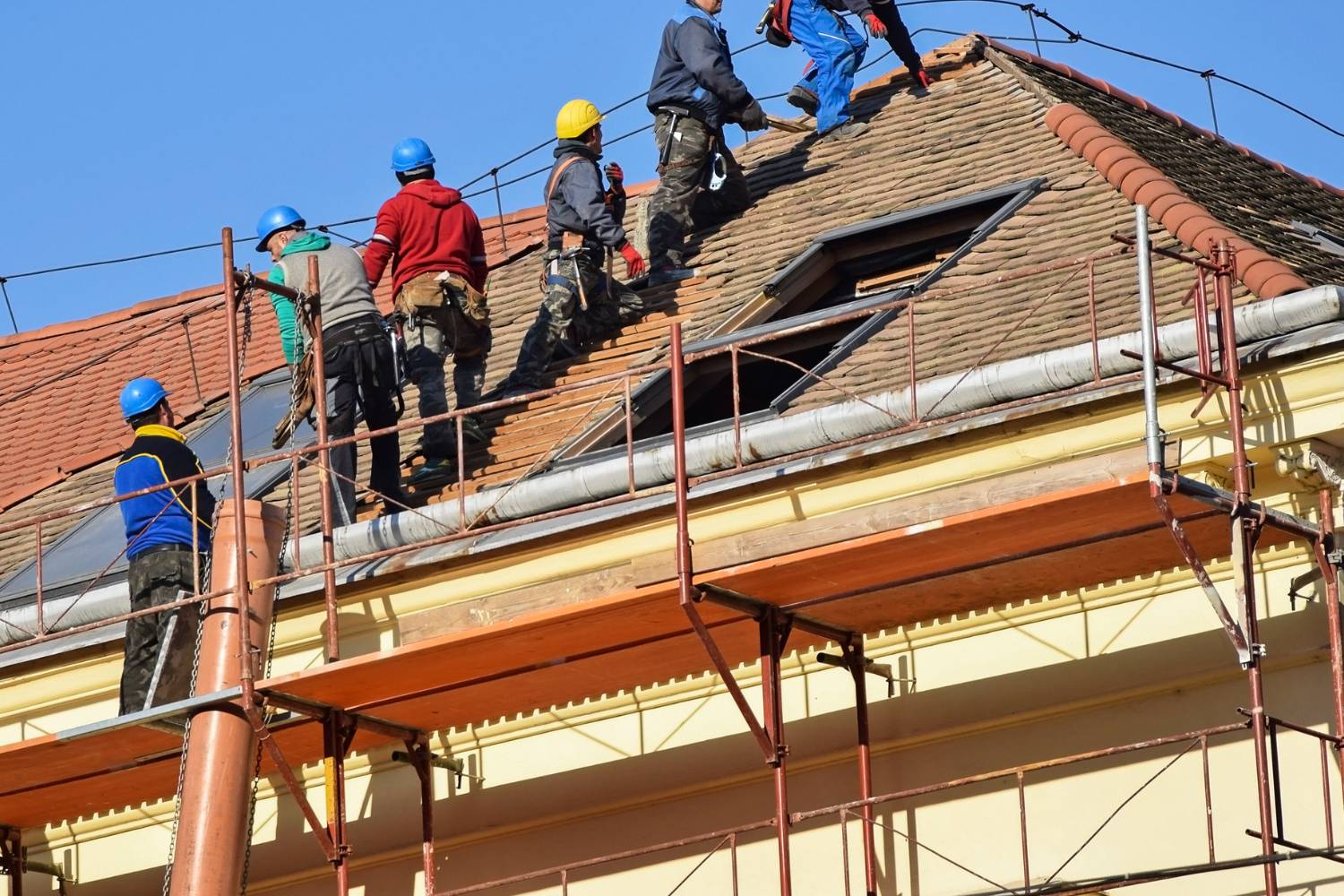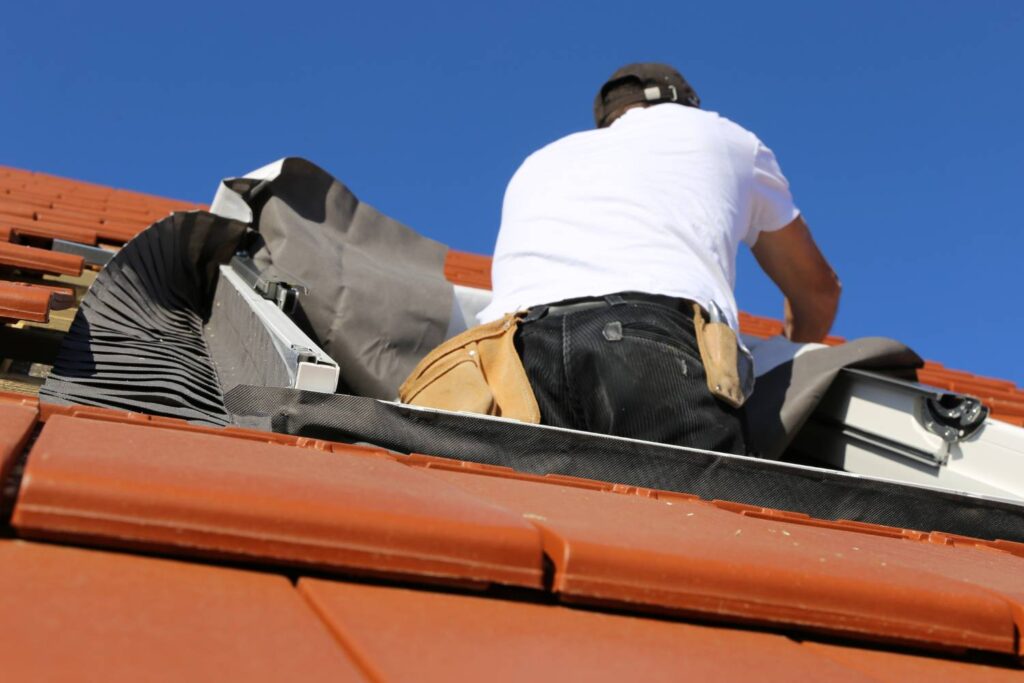Restoring historic roofs is a complex task that goes beyond mere construction; it is an intricate blend of preserving cultural heritage and adapting to modern standards.
This blog delves into the multifaceted world of historic roof restoration, shedding light on the unique challenges faced, innovative solutions employed, and the delicate balance required to maintain the architectural integrity of these treasured structures.
Challenges In Restoring Historic Roofs
Restoring historic roofs involves unique challenges that require careful consideration and specialised skills. Here are the key challenges identified from various sources:
Preserving Historical Integrity
One of the primary challenges in restoring historic roofs is maintaining the building's historical integrity. Historic roofs often hold significant architectural and historical value, making it crucial to preserve these elements. This involves using materials that match the original construction, which can be difficult due to their unavailability or high cost. Ensuring that the restoration work does not alter the historical character of the building is essential to maintaining its authenticity.
Ensuring Structural Integrity
Another significant challenge is ensuring that the new roofing materials and techniques are compatible with the building's existing structure. Historic buildings may not comply with modern structural standards, and their older materials and structures can be fragile. Careful handling is required to avoid further damage during restoration, and it is crucial to ensure that the structural integrity of the building is not compromised by the restoration efforts.
Addressing Hazardous Materials
Historic buildings often contain hazardous materials such as asbestos or lead paint, which must be safely removed and disposed of to ensure both safety and compliance with regulations. Conducting thorough environmental assessments to identify and mitigate these hazards is a necessary step before starting any restoration work. This ensures that the building is safe for future use and that the restoration process complies with health and safety regulations.
Meeting Regulatory Requirements
Securing regulatory approvals is a complex and time-consuming process that involves obtaining the green light from various bodies, including local planning, zoning, and historic preservation commissions. Compliance with preservation standards set by these organisations is essential to ensure the restoration work meets historical accuracy and quality requirements. This can involve detailed presentations and justifications to multiple regulatory bodies to demonstrate that the proposed work will preserve the building’s historical significance.
Financial Constraints
Financial constraints are a major hurdle in historic roof restoration projects. These projects can be expensive, and securing adequate funding through grants, tax incentives, and private investments is often challenging. Effective budget management is crucial to cover unexpected expenses and ensure that the project can afford high-quality materials and skilled labour necessary for a successful restoration.
Skilled Craftsmanship
Restoring historic roofs requires specialised skills and craftsmanship that are often difficult to find. Skilled workers who have experience with traditional roofing techniques are essential, but they are increasingly rare. Training new craftsmen and maintaining a workforce with the necessary expertise to handle intricate restoration tasks is an ongoing challenge. The unique requirements of historic roof restoration mean that only highly skilled and experienced craftsmen can perform the work to the required standards.
How Can Modern Technology Help In Historic Roof Restoration?
Historic roof restoration combines the preservation of architectural heritage with the utilisation of modern technology to ensure that historical structures maintain their integrity while meeting contemporary standards. This blog explores the various technological advancements and methods that have transformed the field of historic roof restoration, ensuring that these structures are preserved for future generations.
Importance Of Historical Roof Restoration
Historic homes and buildings represent significant cultural and historical value, showcasing the architectural styles and craftsmanship of bygone eras. Restoring these roofs is not merely a construction project; it is a preservation of cultural heritage. Restoration plays a critical role in preventing further damage, such as leaks and structural issues, thereby prolonging the lifespan of these structures.
Additionally, utilising modern techniques during restoration can improve the energy efficiency of historic homes, making them more sustainable for future use. This balance of preserving historical integrity while incorporating modern efficiency is crucial for maintaining these cultural landmarks.
Modern Techniques In Roof Restoration
Modern technology has introduced several advanced techniques that significantly enhance the process of historical roof restoration. One such technique is 3D scanning and modelling, which captures the precise dimensions and intricate details of historical roofs, aiding in accurate restorations.
The use of synthetic roofing materials, which mimic traditional ones like slate, wood, or clay but offer enhanced durability and longevity, has also become prevalent. Advanced coatings and sealants provide an additional layer of protection to the roof, preventing water penetration and reducing the risk of leaks. Infrared imaging technology is employed to detect hidden leaks and moisture within the roof structure, allowing for targeted and efficient repairs.
High-pressure washing systems are used to effectively remove dirt, debris, and moss from the roof surface, restoring its appearance and functionality. These modern techniques ensure that restoration projects are carried out with utmost precision and effectiveness.
Preservation Of Architectural Details
Preserving the architectural details that make historic homes unique is one of the most challenging aspects of roof restoration. A meticulous assessment and documentation of the roof's architectural features should be conducted before restoration begins.
This process includes identifying and recording any decorative elements, patterns, or unique materials used. During restoration, skilled craftsmen utilise traditional techniques and craftsmanship to repair or recreate these intricate elements, such as ornamental mouldings or finials.
This ensures that the restored roof maintains its original charm and historical significance. Preserving these architectural details enhances the visual appeal of the historic home and contributes to its overall historical value.
Long-Term Maintenance
Once a historic home roof has been restored, implementing measures to maintain its long-term integrity is essential. Regular inspections by professional roofing contractors can identify potential issues early, allowing for timely repairs. Keeping the roof clean and free from debris prevents clogging of gutters and potential water damage.
Additionally, addressing minor issues such as loose shingles or damaged flashing promptly ensures that the restored roof remains in excellent condition for years to come. Regular maintenance and timely repairs are crucial for preserving the longevity and performance of the restored roof.
Integration Of Technology And Traditional Practices
The integration of advanced technology into the roofing industry does not replace traditional roofing practices but rather enhances and complements them. Drone inspections provide detailed images and videos of hard-to-reach areas, ensuring thorough assessments without risking damage. Data analytics plays an increasingly pivotal role by analysing data from various sources to predict potential issues and make informed decisions about maintenance and replacements.
Predictive maintenance, powered by artificial intelligence (AI) and machine learning, analyses data to predict when a roof may require maintenance or repairs. This approach shifts the maintenance strategy from reactive to proactive, preventing small issues from escalating into major problems.
Integrating these technologies with traditional roofing practices ensures that the craftsmanship and experience of skilled roofers are augmented with the precision and efficiency of modern technology. This blend improves the quality of roofing projects and elevates safety standards and operational efficiency.
What Are The Best Materials For Restoring Historic Roofs?
Restoring the roofs of historic buildings is a task that demands attention to detail and a deep respect for architectural heritage. The choice of materials is crucial to maintain the aesthetic integrity and structural safety of these buildings. Here are some of the best materials for restoring historic roofs, compiled from various expert sources.
Slate
Slate has been a popular roofing material since the mid-1600s due to its durability and aesthetic appeal. Known as "hundred-year roofs," slate shingles can last for a century or more if properly maintained. They are fireproof and highly resistant to weathering, making them an excellent choice for historic buildings. However, the weight of slate can be a disadvantage, potentially stressing the building’s structure, especially if it has been weakened by age or leaks.
Wood
Wood shingles and shakes are among the oldest roofing materials, used extensively in early colonial America. Cedar and cypress are commonly used for their durability and resistance to decay. Wood shingles provide a rustic charm and are lightweight, reducing the load on the building structure. However, wood is vulnerable to fire, mould, and insect damage. Modern synthetic coatings can help mitigate these issues, but regular maintenance is required.
Metal
Metal roofing, particularly copper, has been used in North America since the 1700s. Copper roofs are highly durable and develop a distinctive green patina over time, adding to their historical charm. Metal roofs are lightweight and fire-resistant, making them suitable for historic structures. However, metals like iron and steel can corrode, though modern galvanisation techniques can reduce this risk.
Clay Tiles
Clay tiles have been used since the 17th century and are known for their durability and aesthetic appeal. They are resistant to sunlight, retaining their colour and structural integrity over time. Clay tiles are also fire-resistant, making them a safe option for historic buildings. However, they are brittle and can be damaged by impacts from falling objects or severe weather.
Asphalt Shingles
Introduced as an inexpensive alternative to wood shingles, asphalt shingles became popular in the 20th century. They are cost-effective and easy to install, making them a practical choice for budget-conscious restorations. However, asphalt shingles have a shorter lifespan compared to other materials and are more susceptible to weather damage.
Choosing The Right Material
When selecting materials for historic roof restoration, it is essential to consider the building’s original architecture and historical significance. Consulting with local historical societies and experienced roofing contractors can ensure that the chosen materials align with the historical integrity of the building. For example, Victorian homes often use slate or wood shingles, while Mission Revival homes typically feature clay tiles.
How To Choose The Right Roof Restoration Professional For Historic Homes?
Selecting the right roof restoration professional for historic homes is crucial for maintaining the structural integrity and aesthetic value of these treasured buildings. The process involves careful consideration of various factors to ensure that the chosen professional has the necessary expertise and experience. Here’s a comprehensive guide to help you make an informed decision.
Research Their Experience
When choosing a restoration contractor, it is vital to look for professionals with extensive experience in working with historic buildings. Such contractors should be knowledgeable about historic preservation techniques and the specific requirements of older structures. Check their credentials, such as licences, certifications, and professional affiliations.
Many restoration specialists have degrees in history, archeology, or related fields, while others have gained expertise through hands-on experience under seasoned professionals. Ensure that the contractor understands the time period of your building and can achieve the desired authenticity in their restoration work.
Ask About Their Preservation Philosophy
Understanding a contractor’s approach to historic preservation is essential. Inquire about their philosophy regarding maintaining the building’s historic character and integrity. Do they prioritise the use of traditional building materials and techniques? Their philosophy should align with your goals for the restoration project and comply with any local preservation guidelines. Additionally, ensure that they can find suitable subcontractors for specialised tasks, such as carpenters for intricate woodwork or experts in tuckpointing.
Check Their Portfolio
Reviewing a contractor’s portfolio is a practical way to gauge their experience and skill level. Look at their past projects, paying close attention to the types of buildings they have worked on and the quality of their restorations. Ensure that they have experience with buildings similar to yours and that they are proficient in the methods of historical preservation and reproduction. For instance, working with antique bricks from a Civil War era building might require different techniques than restoring intricate Victorian trim work.
Verify Their Knowledge Of Your Neighborhood
If your home is located in a designated historic district or is a registered landmark, the contractor must be familiar with the specific permits and restrictions that apply. Knowledge of local regulations is crucial for ensuring that the restoration complies with all legal requirements. Contractors who already understand these rules can streamline the project by efficiently handling permits and inspections, thereby preventing potential legal issues.
Conclusion
Restoring historic roofs is a meticulous and rewarding endeavour that blends traditional craftsmanship with modern technology. The challenges—preserving historical integrity, ensuring structural soundness, navigating regulatory requirements, and securing skilled artisans—are addressed through innovative techniques like 3D scanning, synthetic materials, and advanced coatings.
Choosing the right materials, such as slate, wood, metal, clay tiles, or asphalt shingles, and engaging experienced professionals is crucial. This balance of historical authenticity and modern efficiency ensures that these treasured structures are preserved for future generations, maintaining their cultural heritage and architectural significance.
Frequently Asked Questions
When restoring a historic roof, it's crucial to use materials that match the original structure while offering modern durability. Common choices include clay tiles, slate, and wood shingles, which can be sourced in high-quality, historically accurate forms. Modern innovations include synthetic slate and composite shingles, which mimic traditional materials but provide enhanced durability and weather resistance.
To maintain the historic aesthetic, work with a restoration specialist experienced in historic properties. They can help source period-appropriate materials and use restoration techniques that preserve the original look and feel. Modern technologies like 3D scanning and custom fabrication can replicate intricate details and unique shapes of historic roofs accurately.
Yes, there are energy-efficient options that can be incorporated into historic roof restorations. Adding insulation beneath the roof, using reflective coatings on tiles, and installing solar shingles or panels that blend with the roof design are excellent ways to improve energy efficiency while maintaining the home's historic character.
Modern restoration techniques employ advanced materials and methods that enhance the durability and longevity of historic roofs. For instance, applying weather-resistant coatings, using high-performance underlayments, and incorporating advanced drainage systems can prevent water damage and prolong the roof's life. Additionally, regular maintenance plans using modern diagnostic tools can help identify and address issues before they become significant problems.
When choosing a contractor for restoring a historic roof, look for one with a proven track record in historic restorations. Ensure they have the necessary licensing and insurance and check their references and past projects. It's also essential they are knowledgeable about the specific requirements and regulations for historic buildings in your area. A good contractor will work closely with you to ensure the restoration respects the home's historic integrity while incorporating modern solutions for longevity and performance.


